Service and combat use of Argentine turboprop attack aircraft IA.58A Pucara
Turboprop anti-guerrilla attack aircraft... After the end of the war in Indochina, interest in turboprop anti-insurgency attack aircraft did not disappear. To combat national liberation movements, various rebel groups and armed groups of drug cartels, the governments of Asia, Africa and Latin America needed inexpensive and easy-to-operate combat aircraft capable of operating from poorly prepared field airfields, making long patrol flights, searching and attacking point targets.
The most common way to create a light anti-insurgency attack aircraft was the suspension of weapons on serial turboprop trainer aircraft. In a number of cases, the revision was carried out without the knowledge of manufacturers in the countries where these machines were operated. However, conversion into combat aircraft, which were not originally intended for military use, did not always give the desired result. In addition to suspension units aviation means of destruction and sighting devices, to increase resistance to combat damage, special technical solutions were required: protection of fuel tanks, which prevented fuel leakage in the event of a lumbago, and filling them with inert gas, which was to prevent an explosion of the air-fuel mixture. It was also highly desirable to duplicate a number of systems and local booking of the most vulnerable nodes and the cockpit.
It is clear that a specially designed turboprop attack aircraft in terms of the level of protection, weapon power and efficiency will generally be higher than aircraft of a similar purpose converted from training vehicles. But such an approach was rarely implemented in practice, although projects for specialized turboprop attack aircraft were being worked out. Economically developed countries with a developed aviation industry in most cases did not have problems with insurgents and in preparation for the "big war" equipped their air forces with supersonic jet combat aircraft.
Although many countries of the "third world" wished to have specialized anti-guerrilla aircraft, not everyone had the opportunity to independently create such machines. In the late 1960s, specialists from the Argentine state aircraft company Fábrica Militar de Aviones began developing a light turboprop attack aircraft, primarily intended for counterinsurgency operations. The first flight of the strike aircraft, designated IA.58A Pucara ("pucara" in the Quechua language means "fortress") took place on August 20, 1969.
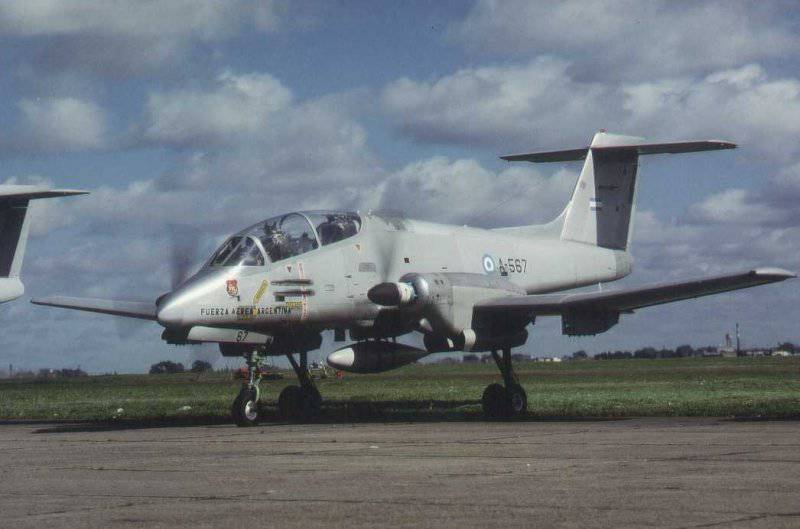
Unlike the Bronco and Mohauca, the Argentine attack aircraft was made according to a normal aerodynamic configuration with a low-lying straight wing and T-shaped tail. The aircraft had a simple and technologically advanced design. Numerous easily removable cladding panels facilitate ground handling. The downward sloping front of the fuselage provided excellent forward-downward visibility. High landing gear struts made it possible to suspend a variety of bomb loads in the form of bombs and blocks with unguided missiles, and low-pressure pneumatics made it possible to operate from poorly prepared unpaved airfields.
The first serial attack aircraft was delivered to the Argentine Air Force (Spanish: Fuerza Aérea Argentina, FAA) at the end of 1974. This relatively small, sleek, straight-wing turboprop attack aircraft was the first production combat aircraft developed in Argentina. Its release lasted until 1988, a total of 114 were built, of which 16 were for export.
The attack aircraft was created taking into account the experience of the combat use of aviation during battles with guerilleros. During the issuance of the technical task, the Argentine military demanded that the aircraft have good take-off and landing characteristics (the required runway length is no more than 400 m), high maneuverability at low altitude, the ability to attack small-sized, well-camouflaged targets and evade anti-aircraft fire.
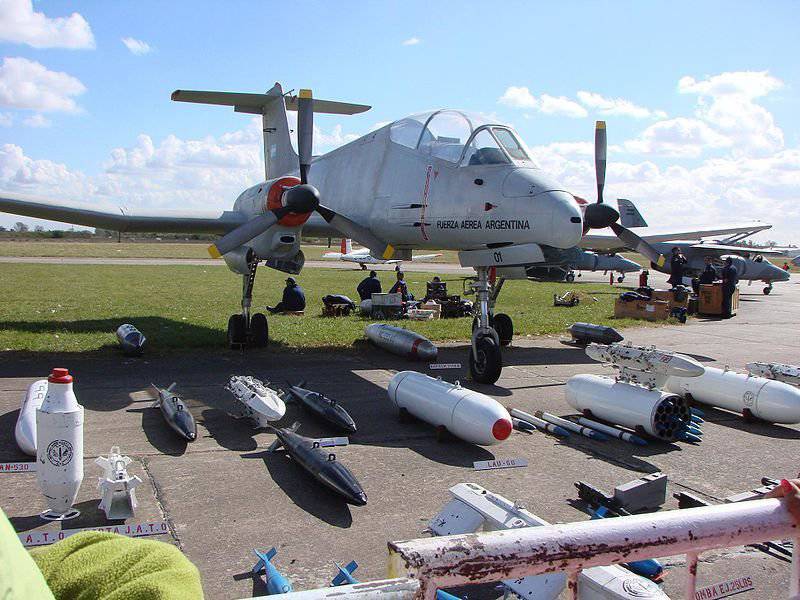
Compared to the American counterinsurgency aircraft used in Indochina, the Pukara's built-in small arms were much more powerful: two 20mm Hispano-Suiza HS.804 cannons and four 7,62mm Browning FN machine guns. Ammunition for each gun was 270 rounds, and each machine gun - 900 rounds. On seven nodes of the external suspension, it was possible to place a combat load weighing up to 1620 kg.
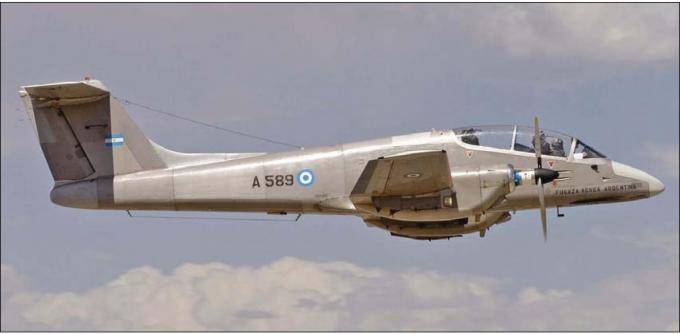
Two turboprop engines Turbomeca Astazou XVIG with 978 hp. each at an altitude of 3000 m could accelerate the plane to 520 km / h. The dive speed was limited to 750 km / h. Cruising speed - 430 km. Stall speed - 143 km / h. The maximum take-off weight is 6800 kg. Combat radius with a load of 1500 kg - up to 370 km. Ferry range with outboard tanks - 3700 km. The crew, consisting of a pilot and an observer navigator, was housed in Martin-Baker Mk 6 ejection seats. The cockpit armor protected the bottom and side from rifle bullets fired from a distance of 150 m. The canopy was made of bulletproof glass, the rest of the glazing was made of plexiglass.
The Argentinean turboprop attack aircraft did not have outstanding flight characteristics, but it was simple and cheap to manufacture, was reliable and unpretentious in maintenance, could be based on poorly equipped airfields with unpaved runways, and two engines and an armored cabin made it quite tenacious.
Stormtroopers began to fight soon after being adopted. At the end of 1975, during Operation Independencia, several aircraft took part in the hostilities to defeat the People's Revolutionary Army in the province of Tucuman. The next time the Pukars entered the battle during the conflict over the Falklands. In mid-1982, the Argentine Air Force had about 60 turboprop attack aircraft. On several Pukara aircraft of the first series, the rear ejection seat was dismantled (during sorties, as a rule, only the pilot was in the crew), and instead of it an additional fuel tank was installed, which made it possible to increase the combat radius. In this case, the rear cockpit glazing was painted over.
IA.58A could not compete in flight speed with jet fighters, but since the airstrip at Port Stanley was unsuitable for basing Skyhawks and Mirages, the use of anti-guerrilla aircraft in combat became a necessary decision. In addition to the Port Stanley airstrip, attack aircraft operated from small airfields at Goose Green and Pebble Island. Before the end of hostilities, the "Pukars" managed to make 186 sorties, attacking British warships and British marines who landed on the islands with bombs, missiles and machine-gun fire. At the same time, the turboprop attack aircraft suffered heavy losses.
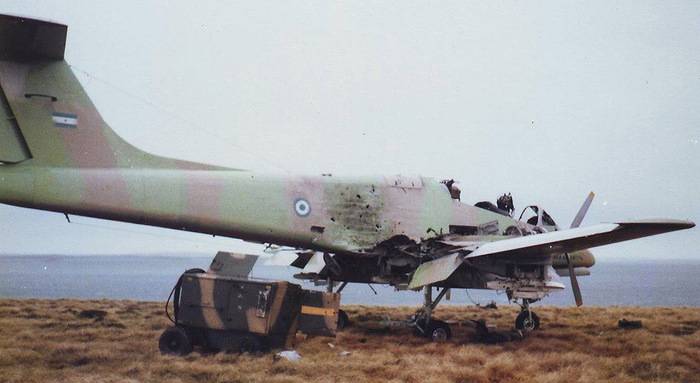
Four "Pukars" of varying degrees of preservation went to the British as trophies. Six planes were blown up by "Navy SEALs" during a sabotage raid on the De Borbon airfield, nine were destroyed on the ground by British carrier-based aircraft or shot by naval artillery, one was shot down by FIM-92 Stinger MANPADS, one by a small-caliber anti-aircraft gun and another by a fighter Sea Harrier FRS. 1. In turn, the Argentine pilot Lieutenant Miguel Jimenez managed to shoot down the British Westland AN 1 Scout helicopter. It won the Argentine Air Force's only confirmed aerial victory in this war. But already in the next sortie "Pucara" Jimenez crashed into a hill due to loss of orientation in low clouds, the pilot was killed.
Aircraft IA.58A did not have a significant impact on the course of hostilities, which was largely due to the lack of effective weapons to fight ships. As military experts later noted, if the Argentines were able to equip the Pukara with torpedoes, the loss of the British fleet could have been much higher.
One captured IA.58A with serial number A-515 was brought up to flight condition by the British and used in a test program at Boscombe Down airbase. Two more damaged aircraft became a source of spare parts. During the preparation of the aircraft for testing, it became clear that it was poorly maintained. An inspection at Boscombe Down showed that the ejection seats had never been removed for maintenance since their installation. Under the influence of sunlight, the braking parachutes lost their strength, which made them unusable. The chassis pneumatics also needed replacement.
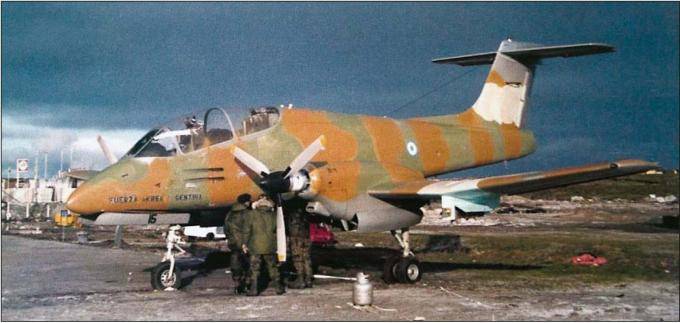
Initially, an overload limit of 3,5g was introduced for flight tests, which was gradually increased to 5,0g. The negative overload limit was 1,5g, and the duration of the flight with it should not exceed 30 seconds. The height of the start of the stall should not be lower than 3050 m, and the height of the exit from the stall should not exceed 2130 m. The permissible aerobatics were barrels, Nesterov's loops, runners (turns on the hill) and immelmans. During the test, the aircraft flew 25 hours, but the aircraft maintenance was based on a 50-hour flight test program.
British experts noted the high maneuverability and good controllability of the Pukara, but it turned out that it was difficult to control it at speeds over 600 km / h. When one engine was turned off, it was possible to climb flight.
During training air battles with British Phantoms and Harriers, the turboprop aircraft was easily detected by onboard radars and at medium distances was vulnerable to air-to-air missiles. But in close air combat, when there was an opportunity to use cannons, "Pukara" could quite successfully snap back. During joint maneuvering with Westland Puma and Sea King helicopters, the IA.58A turboprop aircraft easily took an advantageous position for attack. Based on the results of the tests, it was concluded that the Pukara was not of interest to the British Air Force. However, this machine, with the correct tactics of use, was capable of fighting helicopters and delivering effective strikes against ground targets.
Shortly before the end of the test program, the captured Argentine attack aircraft IA-58 Pucar was presented in a static display at the Royal International Air Tattoo, held at Greenham Common. The aircraft also took part in an open day at the test pilot school in Boscombe Down.
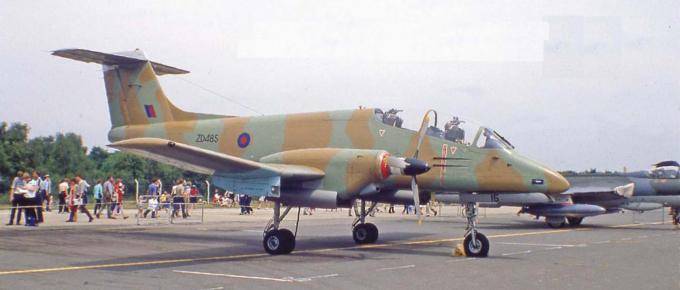
On September 9, 1983, the light attack aircraft IA-58A Pucara, hull number A-515, became an exhibit at the RAF Aerospace Museum in Cosford and remains there to this day.
Even before the start of mass production, the IA-58 Pucara attack aircraft was actively advertised at various aerospace shows and weapons exhibitions. Negotiations on the sale of Pukara were conducted with Bolivia, Venezuela, Mauritania, Morocco, Paraguay, Peru, Iraq and the Central African Republic. Although buyers from Third World countries were actively interested in it, few export contracts were signed. This was mainly due to Argentina's unwillingness to supply aircraft on credit and the strong influence of foreign policy factors. As a result, the governments of Venezuela and Morocco chose to purchase the American OV-10 Bronco.
Uruguay became the first foreign buyer of Pukara. In the Air Force of this Central American state, six Argentinean-made turboprop attack aircraft replaced the piston AT-6 Texan and P-51 Mustang, which were mainly intended to fight the rebels.
Currently, all Uruguayan IA-58A are non-combatant, in connection with which the issue of overhaul and modernization to the IA-58D Pucar Delta level is being considered. As of 2017, in the Uruguayan Air Force, three Pukars could take off. These machines are currently in storage.
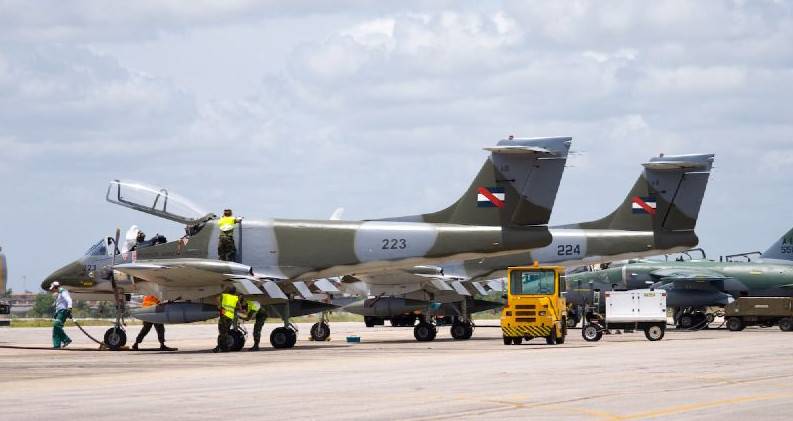
In the late 1980s, the Argentine government announced its intention to sell 40 used attack aircraft in connection with a reduction in the military budget. Colombia and Sri Lanka became interested in this proposal, in which at that time there was actually a civil war.
There are very few details about the actions of the IA-58A turboprop attack aircraft in Colombia; in total, this country has acquired 6 attack aircraft. It is known that the Pukars, together with the American-made OV-10 Bronco and A-37 Dragonfly attack aircraft, dropped 113- and 227-kg bombs and fired unguided rockets at targets of armed leftist groups and drug cartel militants in the Los Llanos area. According to the reference data, IA-58A aircraft are not currently in the active composition of the Colombian Air Force.
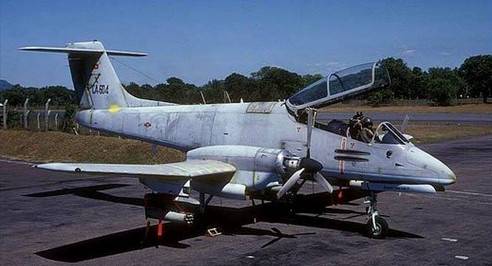
Sri Lanka bought four IA-58A in 1993. These vehicles were actively involved in operations against Tamil separatists. Turboprop attack aircraft conducted armed reconnaissance, carried out bomb-assault strikes and aimed at the target Kfir C.2 and F-7В / G jet fighter-bombers, as well as Chinese-made Y-8 military transport aircraft converted into bombers.
Acting against the Liberation Tigers of Tamil Eelam (LTTE), recognized as a terrorist organization, the Pukara light attack aircraft showed their best qualities: high firepower, excellent visibility from the cockpit, good maneuverability, unpretentiousness, reliability and the ability to be based on poorly prepared temporary airfields ...
Very soon, the Pukars, which greatly annoyed the militants, became a priority target for their air defense systems. During combat missions, one aircraft was shot down by the fire of a large-caliber anti-aircraft machine gun, and two more became victims of the Strela-2M MANPADS. The last surviving IA-58A, due to a lack of spare parts, was decommissioned in 1999 and is now on display at the Sri Lankan Air Force Museum. To compensate for the loss of IA-58A attack aircraft, the Indian government handed over several MiG-27 variable geometry fighter-bombers. However, high-speed MiGs with powerful built-in armament in the form of a six-barreled 30-mm cannon and a much higher combat load are less suited for counter-guerrilla actions and have many times higher operating costs.
Currently, the IA-58A Pucar attack aircraft are considered outdated physically and mentally. Despite this, the FAA command has initiated a major overhaul and modernization program, through which at least 15 aircraft built in the second half of the 1980s must pass. Currently, the Argentine Air Force has 24 turboprop attack aircraft, but a significant part of them are to be written off in the near future due to the full depletion of the airframe resource. All "Pukars" capable of taking off into the air are combined into two assault squadrons based at the Daniel Yukich airfield.
The creation of the modernized attack aircraft was carried out by the former designer and serial manufacturer of Pukara aircraft - the Argentinean state-owned enterprise Fabrica Argentina de Aviones (FAdeA) in Cordoba, together with the Israeli corporation Israel Aerospace Industries (IAI).
In addition to the new avionics complex, the supplier of which is another Israeli company Elbit Systems, the aircraft received a new wing and Pratt & Whitney Canada PT-6A-62 engines with a capacity of 950 hp, with four-bladed propellers. The updated avionics should significantly expand the search and strike capabilities of the attack aircraft, ensure the use of modern guided aviation ammunition and include a laser rangefinder-target designator, a synthetic aperture radar, modern communications and navigation. The upgraded aircraft will be able to carry a container with passive IR sensors, which will improve the ability to search for and destroy targets in the dark. 20mm Hispano-Suiza HS.804 cannons and 7,62mm Browning FN machine guns are planned to be replaced with 30mm DEFA 554 cannons.
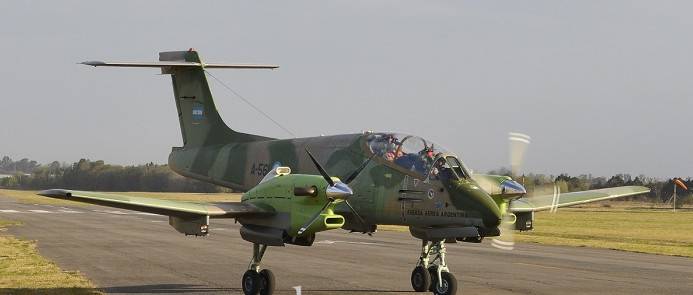
The renovated IA-58H Pucara aircraft, hull number A-561, intended for testing new engines, made its first flight on November 24, 2015. Another attack aircraft with the number A-568 was converted to test electronic systems.
The fully modernized and overhauled aircraft received the designation IA-58D Pucar Delta (sometimes referred to as the IA-58 Fenix). It is envisaged that the modernized turboprop attack aircraft will remain in service until 2045.
To be continued ...
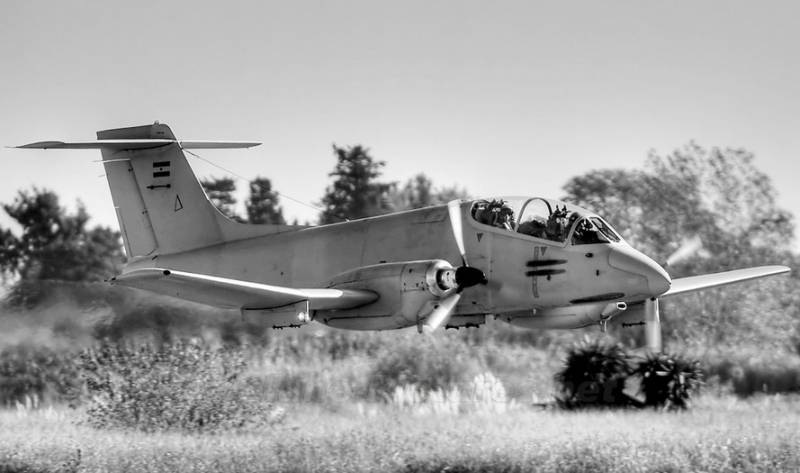
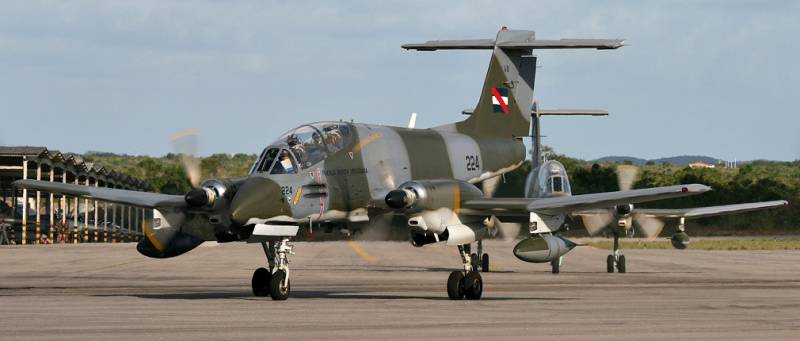
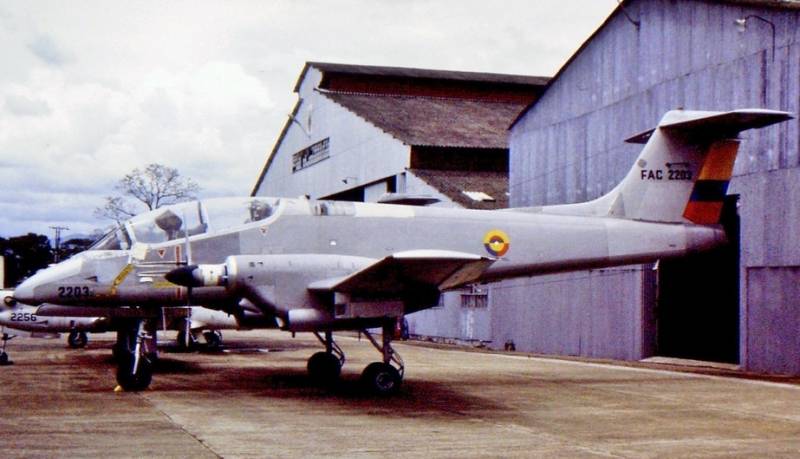
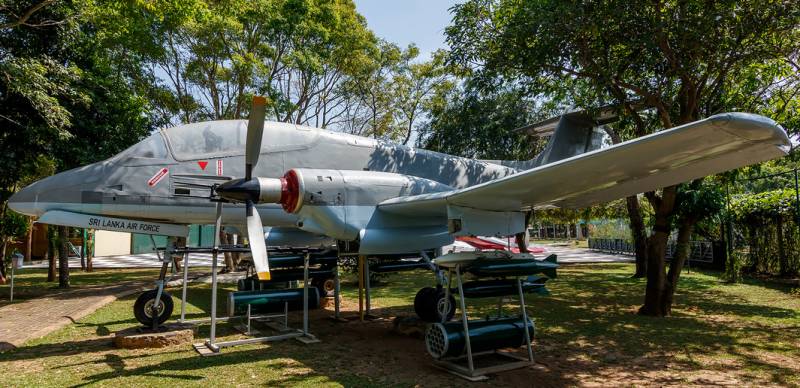
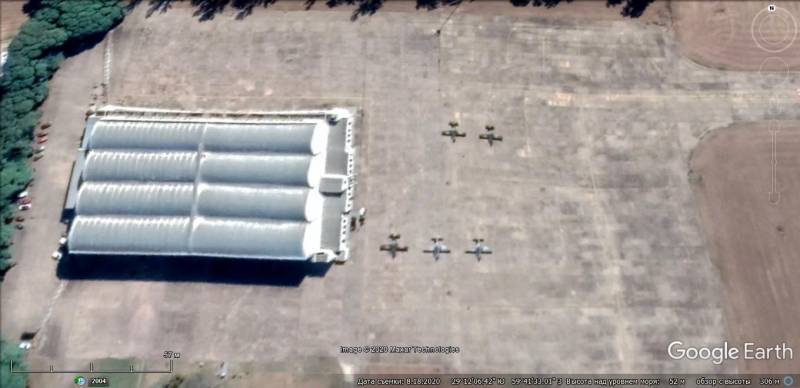
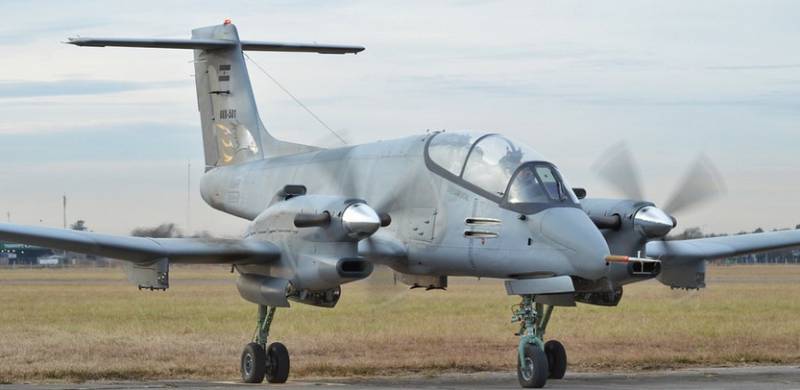
Information